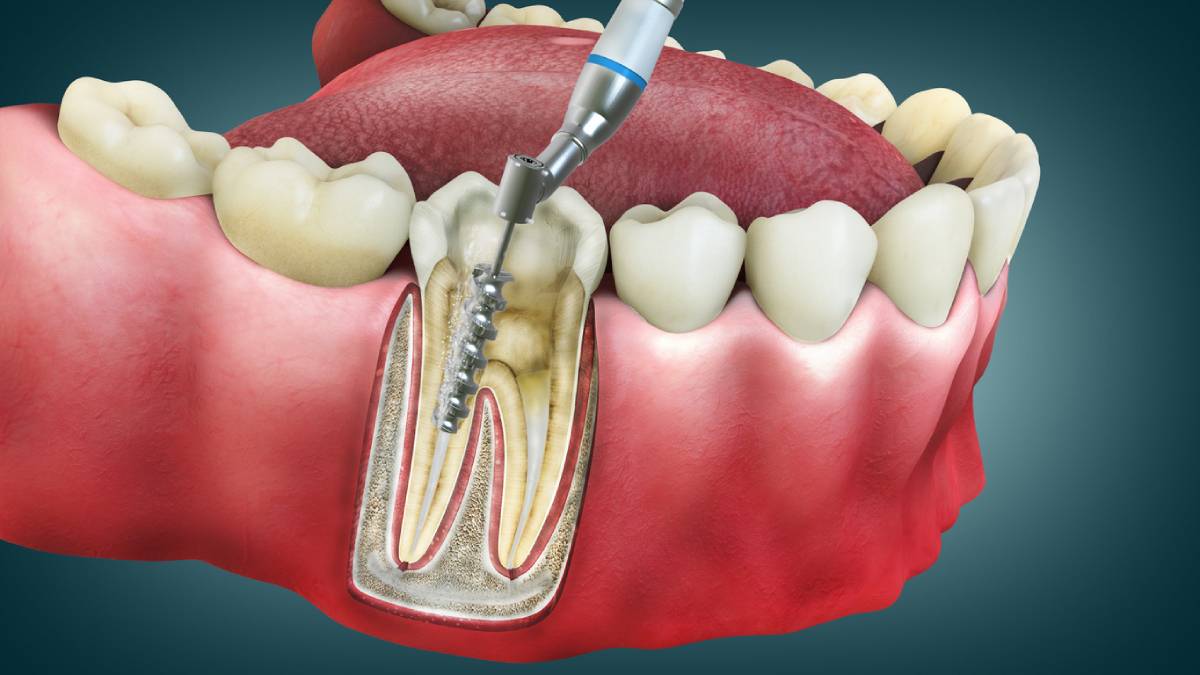Root canal therapy is often performed when the tooth has an extensive infection that cannot be treated with a dental filling. This is a routine procedure performed daily in most dental offices. But how long does a root canal procedure take? Please read our article, in which we answer this question and discuss the steps of the procedure.
How Long Does a Root Canal Procedure Take?
In most cases, root canal therapy typically takes around an hour. However, it can take longer in more complex cases. The factors that influence the duration of a root canal procedure include:
- The location and type of the tooth being treated. Thus, molars that have two or three roots will take longer than teeth that have just one root.
- The complexity of the case and the extension of the infection
- A need for additional procedures, such as a dental crown placement.
What Happens During a Root Canal Procedure
Let us examine the steps of root canal therapy to help you prepare for the procedure:
Before the Procedure
Before the treatment itself begins, your dentist will administer a local anesthetic via injection in the gum next to the tooth being treated. It typically takes just a couple of minutes for the anesthetic to take effect. Modern anesthetics are reliable and effective in blocking pain and other sensations at the procedure site. Additionally, if you still experience discomfort during your treatment, your doctor can adjust the anesthetic dose accordingly. Thus, the majority of patients experience no discomfort during a root canal procedure.
In cases when patients have a high tolerance to local anesthetics, find it challenging to remain in one position for a long time, or experience severe dental anxiety, their doctor can offer to use one of the sedation options. Sedation can be used in addition to a local anesthetic or as an alternative to it, depending on the type of sedation. Options of sedation usually available in dental offices include:
- Nitrous oxide, also called laughing gas
- Oral sedation, typically in the form of pills
- IV (intravenous) sedation
- General anesthesia (used in dentistry only in cases when the procedure is very complicated and takes an extended time)
During the Procedure
Once the local anesthetic and sedation, if you opt for it, take effect, your dentist will start the treatment. The inner chambers of the tooth where the infected pulp is located are accessed through the tooth’s crown. Then, the infected pulp is removed, and the canals are cleaned and treated with antibacterial medication. When your doctor is sure that no infection remains in the canals, they are filled with a biocompatible material and sealed so that bacteria cannot access them.
Sometimes, a tooth can be significantly weakened by extensive decay and will not be able to withstand a lot of chewing force for a long time, even after a root canal treatment. In such cases, your doctor will recommend covering the tooth with a crown. A dental crown is a “cap” that covers the entire tooth. It prevents further damage to the tooth and reinforces its structure. Dental crowns can be made of porcelain, resin composite, metal, porcelain-fused-to-metal, or zirconia.
After the Procedure
When the local anesthetic wears off, which typically takes a couple of hours, you will most likely start experiencing some soreness or pain at the procedure site. These feelings are expected and will subside within a couple of days as your tooth and the surrounding gum tissue recover after the treatment. We recommend abstaining from eating anything before the anesthetic wears off, as you may accidentally bite the soft tissue in your mouth or damage the newly treated tooth by biting too hard on it.
Other symptoms you are likely to experience during your root canal recovery include gum swelling and sensitivity of the treated tooth to changes in temperature.
To have a smooth recovery after your root canal therapy, follow these tips:
- Manage pain and soreness with over-the-counter painkillers, such as Ibuprofen
- Use cold compresses if you experience swelling
- Switch to a soft diet and chew on the other side of your mouth
- Abstain from very cold and very hot foods and drinks
- Take the entire course of antibiotics if your dentist prescribes them
- Maintain thorough oral hygiene
- Avoid nicotine, alcohol, and strenuous activities
Make an Appointment at My Dentist Anaheim
Do not hesitate to contact our office today and make an appointment with an experienced dentist for stress-free root canal therapy. Our specialists look forward to welcoming you to My Dentist Anaheim.

